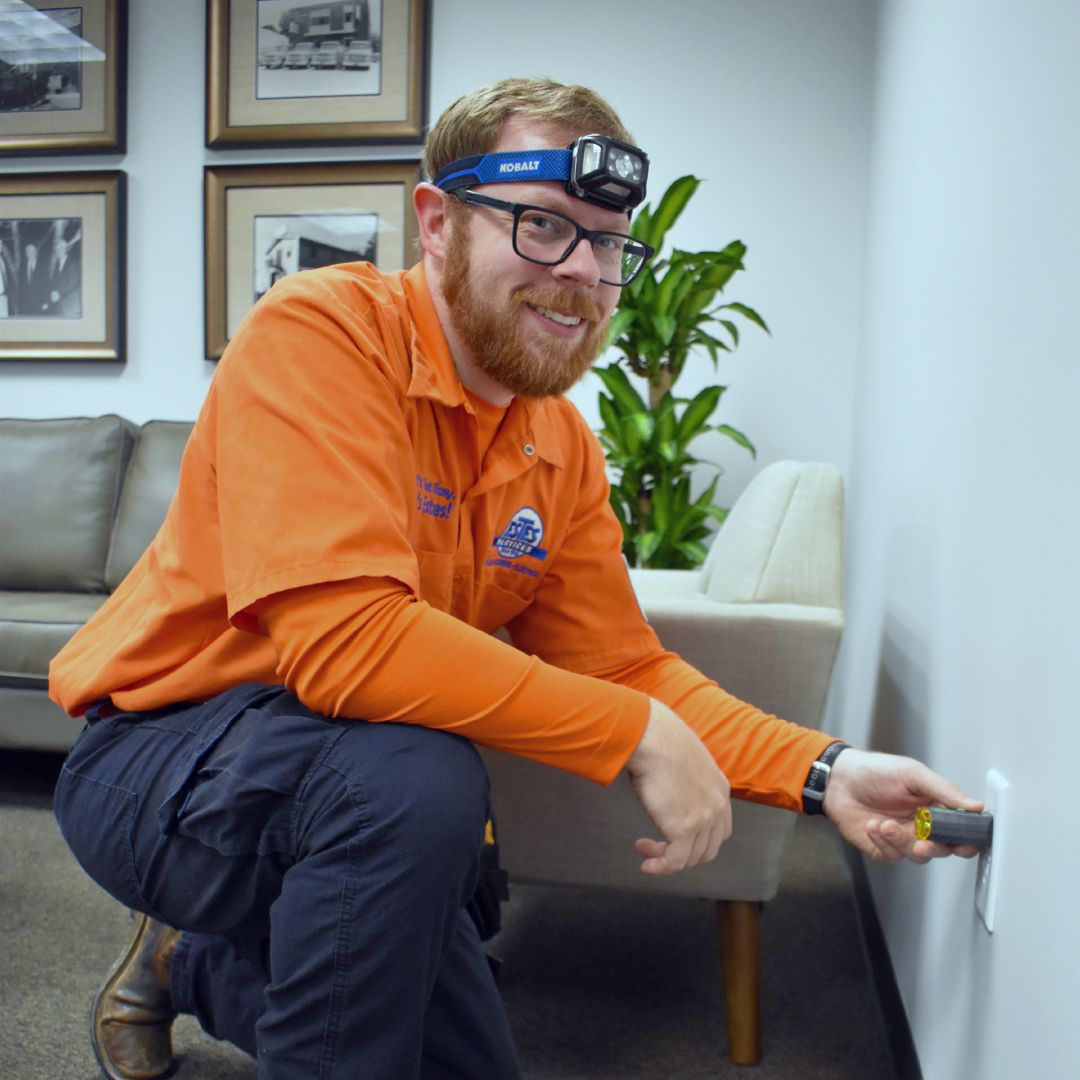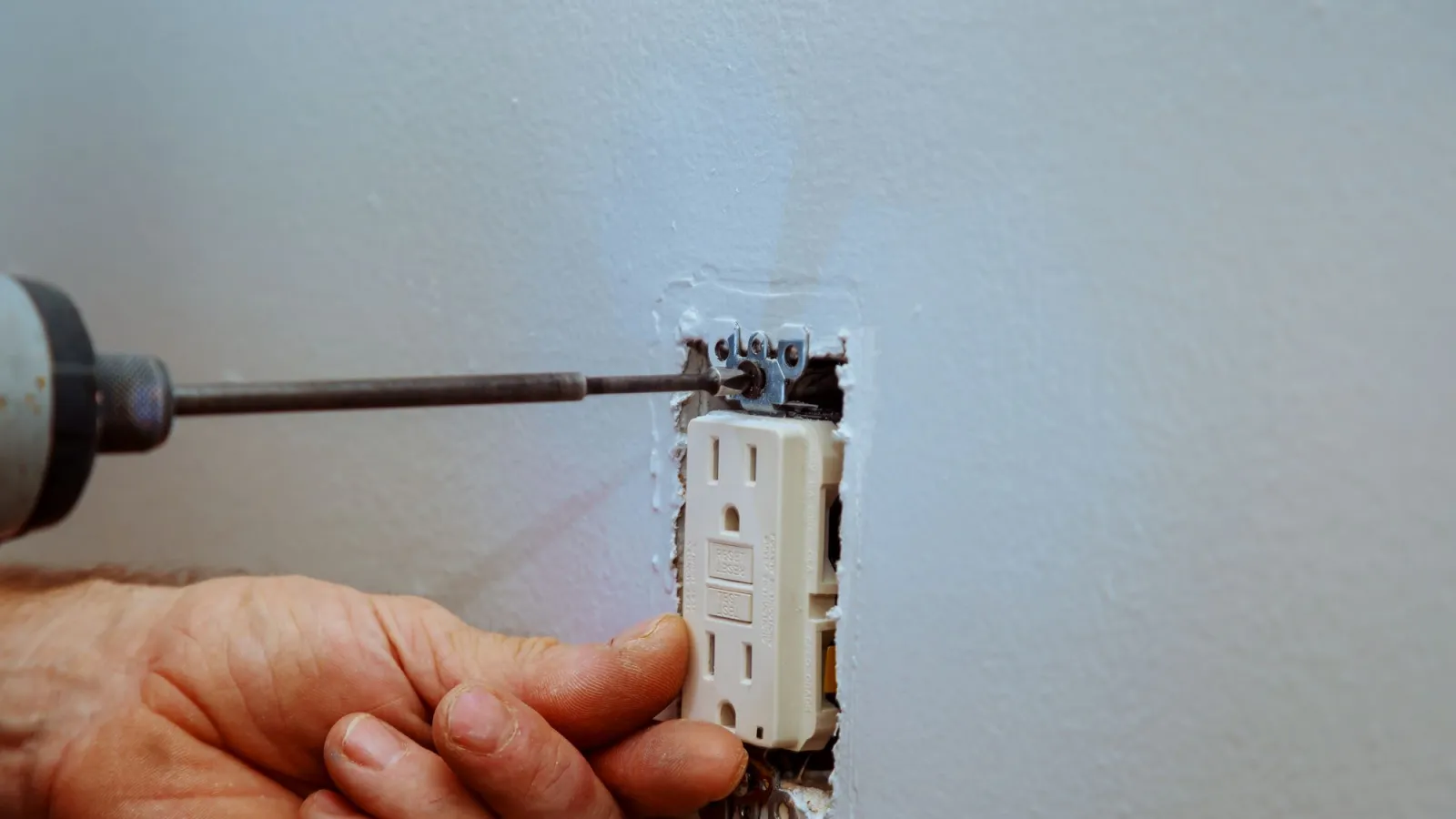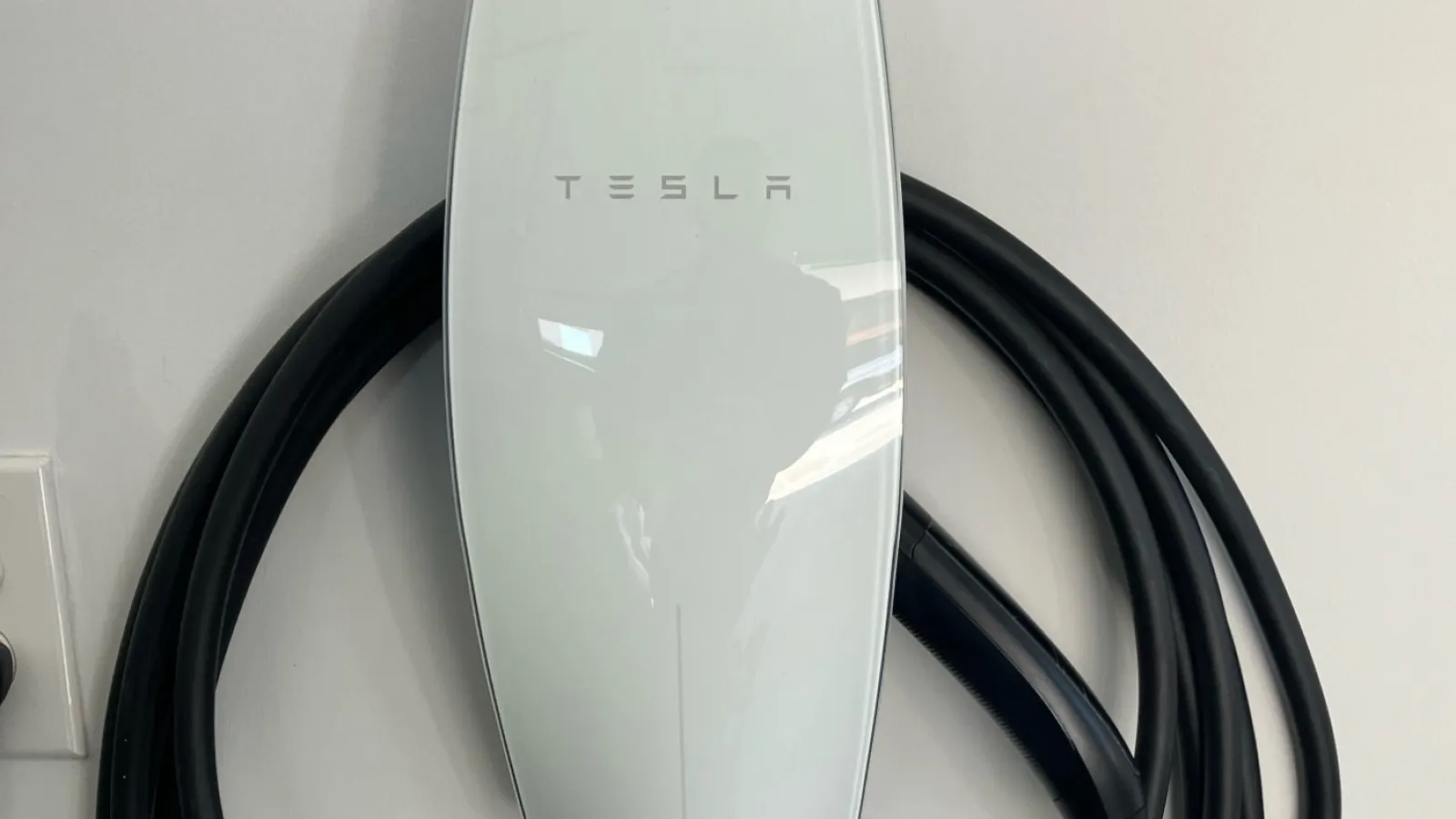When a wall socket or outlet stops working in your Metro Atlanta home, it's more than an inconvenience—it can be a warning sign of a deeper electrical issue. Sometimes, the outlet itself is to blame. Other times, it's a sign of tripped breakers, loose wiring, or even a failing appliance.
At Estes Services, we understand how disruptive and potentially dangerous electrical problems can be. That's why our licensed electricians offer fast, professional diagnosis and solutions to keep your home safe and powered.
Let's explore the most common reasons an outlet is not working, how to troubleshoot, and when to call Estes Electrical Services for help.

Common Reasons an Outlet Stopped Working
1. Tripped Circuit Breaker
Circuit breakers automatically shut off power to prevent overloads or hazards. If an outlet randomly stopped working, your breaker panel is the first thing to check.
What to do:
Open your main electrical panel and look for a breaker switch that is out of line with the others or sitting between the ON and OFF positions. Flip it to OFF, then firmly back to ON. Test the outlet again.
Call Estes Services if:
The breaker trips again
Multiple outlets in the same area don't work
You suspect faulty or aging wiring
Our electricians can inspect your system, identify overloads, and upgrade circuits if needed.
2. Tripped GFCI Outlet
GFCI (Ground Fault Circuit Interrupter) outlets protect against electric shocks in areas like bathrooms, kitchens, and laundry rooms.
How to reset a GFCI outlet:
Look for a reset button (often red or black) in the center of the outlet. Press it firmly, then try using the outlet again.
Why call Estes Services:
If the GFCI won't reset
If multiple outlets are dead
If your GFCI outlets are outdated or missing altogether
We offer professional GFCI outlet installation and replacement for improved safety and code compliance.
3. Loose or Damaged Wiring
Over time, wires can loosen or degrade behind an outlet, breaking the connection between your device and power source.
Warning:
Do not attempt to fix wiring yourself. This is a fire and shock risk. Only licensed electricians should handle wiring inspections or repairs.
Estes Electrical Services will:
Turn off the power and safely access the outlet
Inspect for loose terminals or burned wires
Perform secure repairs or complete outlet replacement by Estes Services
4. Burned-Out or Faulty Outlet
Outlets can wear out, especially in older homes. Common signs include:
Burn marks on the faceplate
A melted or warm outlet
A burning smell
Devices don't stay plugged in securely
These are serious indicators of overheating or internal damage. Do not use the outlet—call Estes Services immediately.
We offer safe and fast outlet replacement to restore proper function and protect your home from electrical hazards and potential fires.
5. Outlet Controlled by a Wall Switch
In many homes, wall switches control one or both sockets of an outlet. If you move into a new home and your outlet seems dead, try toggling nearby light switches.
If power doesn't return, Estes Electrical Services can trace the wiring, correct half-hot outlet configurations, and ensure the circuit is properly set up.
6. Overloaded Circuit or Blown Fuse
Plugging too many devices—especially high-wattage appliances—into a single outlet or circuit can overload the system. In older homes, this often causes blown fuses or tripped breakers.
What to do:
Unplug some devices from the outlet
Test other nearby outlets
Avoid using extension cords or multi-plug adapters long-term
Estes Services can assess your home's electrical capacity and recommend circuit upgrades or rewiring as needed.
Troubleshooting Steps You Can Try
If your outlet is not working, and you've ruled out the device you plugged in, try these safe DIY checks:
Check Other Outlets - If multiple are dead, it's likely a breaker issue.
Test GFCI Reset - Especially in kitchens, bathrooms, and garages.
Inspect Breaker Panel - Look for tripped switches.
Look for Wall Switches - Some outlets are controlled by wall switches.
Never Ignore Burn Marks or Heat - These require urgent attention from a professional.
Why Choose Estes Electrical Services?
Estes Services has been trusted in Metro Atlanta since 1949. Our experienced, licensed electricians provide safe, code-compliant repairs, upgrades, and inspections for residential properties.
We're proud to be among the best electricians near you—highly rated for our honesty, professionalism, and trustworthy results.
Our Electrical Services Include:
Outlet replacement and upgrades
GFCI outlet installation
Whole-home electrical inspections
Circuit breaker & fuse box upgrades
Ceiling fan and light fixture installation
Surge protection and grounding
Code compliance corrections
Smart home wiring
Wiring for remodels and additions
Prevent Future Outlet Problems
A wall socket that stops working may be the first sign your electrical system needs attention. If your home is more than 20 years old, a full inspection can uncover hidden issues before they become hazards.
Estes Services offers proactive maintenance to help you:
Catch wiring issues early
Upgrade outdated components
Avoid fire risks and power interruptions
Stay compliant with modern codes
Contact Estes Electrical Services in the Metro Atlanta Area
If your outlet randomly stopped working, don't wait to find out why. Electrical problems can escalate quickly, putting your safety and home at risk.
Trust Estes Services for outlet replacement, expert diagnosis, repairs, and upgrades that keep your home powered and protected.
📞 Schedule your service today with Estes Electrical Services—your trusted electricians in the Metro Atlanta area.



